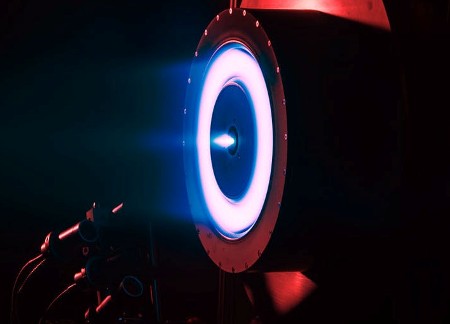Bezos Brothers to Go to the Edge of Space in July
In the last few days, we have learned that the Bezos brothers are heading to a suborbital spaceflight on July 20 using Blue Origin’s New Shepard rocket. I guess this is putting Jeff Bezos’ money where his mouth is as he and his brother Mark fly to the edge of space on the anniversary date of America’s moon landing in 1969.
New Shepard has been tested 15 times without any humans aboard. This will be the first of what Bezos hopes will become a space tourism business. It will mark the first time a billionaire has gone to space. Later this year, Richard Branson hopes to be the second person with more money than he needs and knows what to do with. He will fly in the Spaceship2 Unity suborbital spaceplane to the edge of space. I think both men are trying to goad Elon Musk to take a ride in the future either with Dragon and Falcon 9 or with the Starship. Musk has already stated he’s not going to Mars, just sending others there.
China Introduces Ion Drives for the Space Station It’s Building
Ion drives are different from chemical rocket motors. You can’t get off the planet with the former. But once in space, they can get you to places with very little fuel and save time. Both NASA and the China National Space Administration (CNSA) have been experimenting with this form of propulsion.
Ion drives use electric propulsion to accelerate a spacecraft once in space. In Earth’s atmosphere and having to fight gravity, it’s a losing battle for this type of engine, but in space, the drive creates acceleration by stripping gas molecules of electrons and shooting the remaining positive ions out the back to create thrust. Theoretically, a spacecraft powered by ion thrusters would incrementally gain speed over time and, for example in a voyage to Mars, could attain speeds five times greater than current chemical rockets. That would cut down the time it would take for an Earth to Mars and return trip from the current eight months each way to a little more than a month.
CNSA has been perfecting ion thrusters and has been firing one down here on Earth continuously for 11 months. Ion thrusters require powerful magnets to direct the ion stream, and specialized ceramic materials to protect them from radiation damage.
China’s first big space test of the technology will be on the Tiangong Space Station. Its first module, Tianhe, launched in April has 4 ion thrusters that use electricity generated from the solar panels to power the drives.
Harvesting Electric Power from Space Could Become a Reality
A yet to be tapped resource, electricity from space is being looked at seriously by NASA, the U.S. Department of Defense, and American companies as the next frontier in renewable, clean energy.
Today, solar powers our satellites in orbit, and solar panels harvest the photons from sunlight and convert them to electricity to power businesses and homes. But what if we could capture solar energy using large photovoltaic arrays and beam that energy to Earth?
Back in 2008, Ben Bova, a science-fiction novelist with 120-authored books under his belt, and President Emeritus of the National Space Society wrote a letter to President-Elect Obama, about harvesting solar energy from space to wean the U.S. off fossil fuels.
In it, Bova noted that the sun generates 386 trillion megawatts of energy per second, a steady, continuous, clean energy resource that could be harvested by solar-power satellites (SPS). These satellites once in orbit would deliver electricity to Earth by microwave. The microwave beam would be diffuse so that any animal or plant life would be unaffected by it. Receiving stations would be located in remote areas and would be linked into a modernized grid.
SPS would convert sunlight to energy far more efficiently than photovoltaic panels do today here on Earth. SPS wouldn’t have to deal with atmospheric interference. shifting of the panels to maximize the amount of energy received, and the daily loss of sunlight at nightfall.
Currently, Japan, China, Russia, the European Union, and the United States are considering building an SPS. The U.S. has plans aimed at a test deployment using the International Space Station sometime in 2023. China has announced plans to have an SPS in orbit by no later than 2030. And who knows if Blue Origin or SpaceX won’t decide to get into the business themselves.
An SPS could be a massive structure. Bova imagined a satellite with a surface area almost 13 square kilometres (5 square miles). It would be placed in a stationary orbit above the planet. The material costs for the first would rival the building of a nuclear power plant. But unlike anything built by humans in the past, an SPS would be assembled in orbit almost exclusively by robots using materials initially sent from Earth, but the vast majority harvested from captured asteroids or the lunar surface.
A mesh network of SPS could theoretically replace all terrestrial power generation sources as material harvesting and manufacturing capacity in space grows. By 2100, then we would be in a position to no longer need terrestrial power generation to deliver power to every corner of the planet. At least, that was Bova’s dream which yet may turn into a reality as we here on Earth end our fossil fuel energy dependency.









